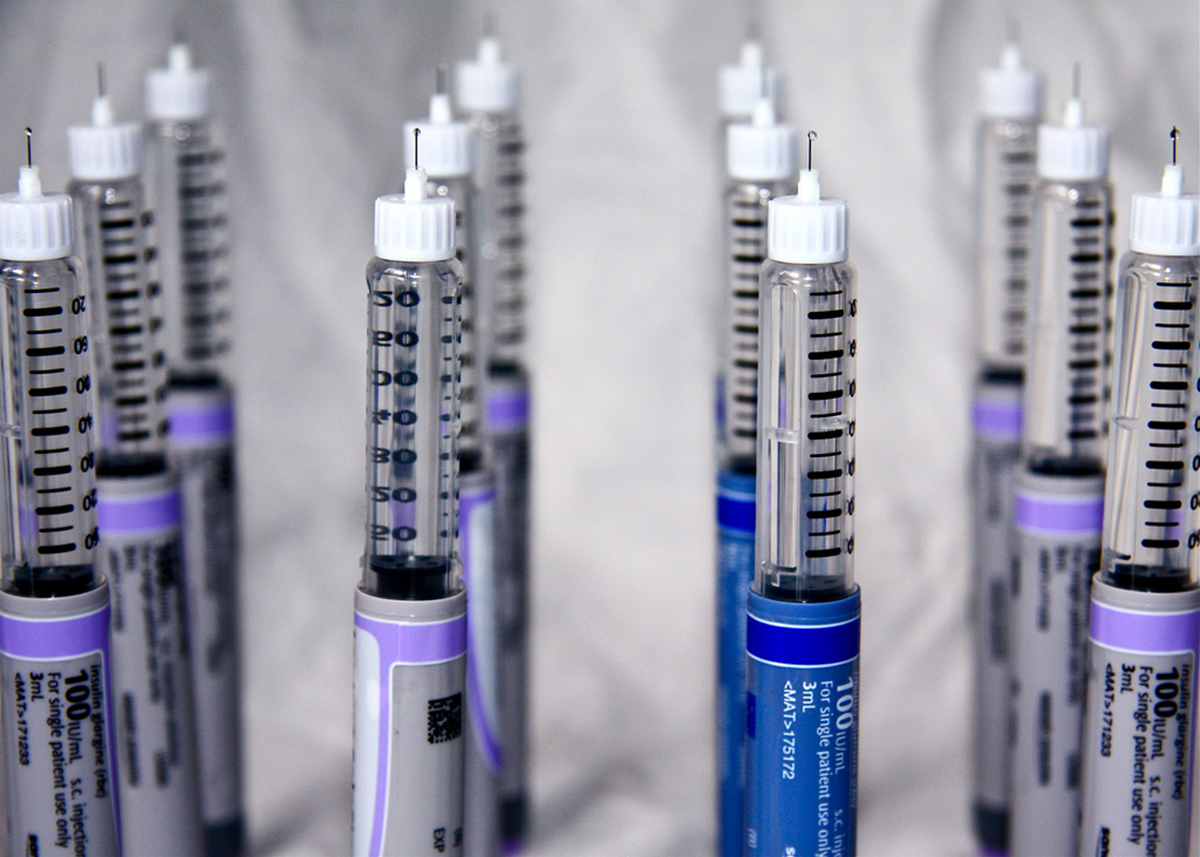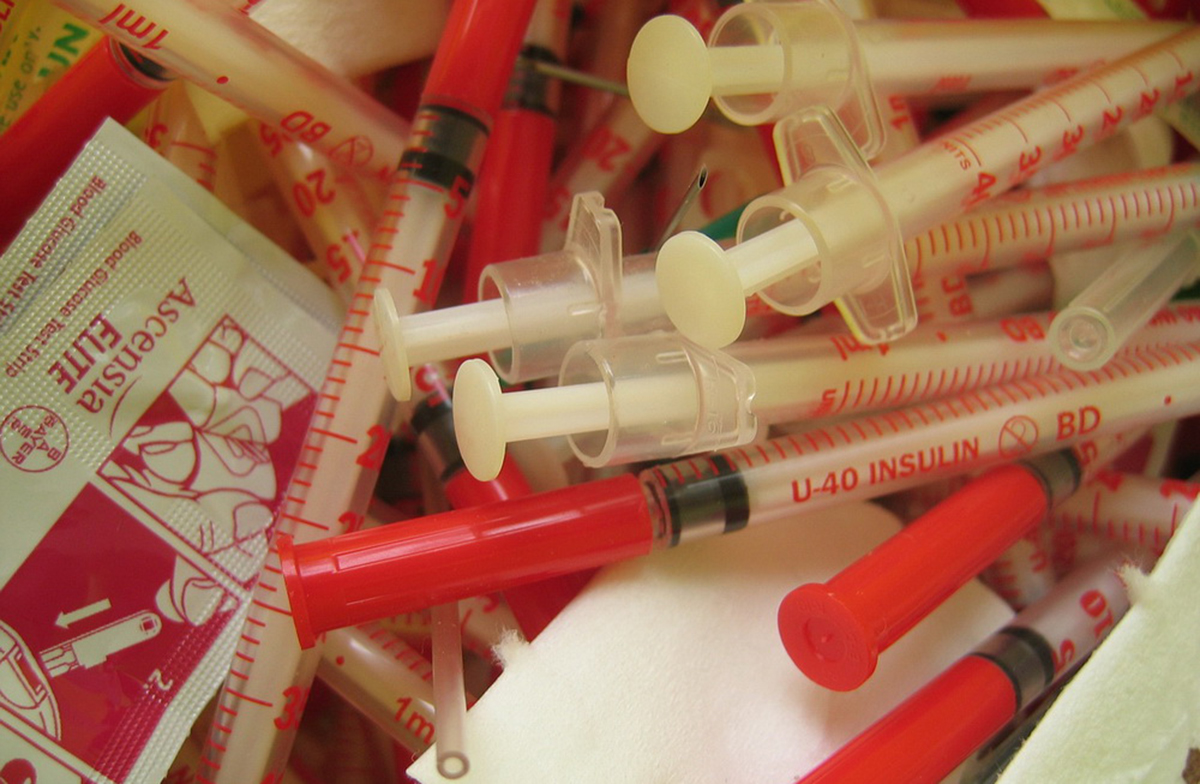Many type 2 diabetics bemoan the possibility of "having to" go on insulin injections to control their blood sugar levels. Insulin, however, is the only medication for diabetes that always lowers blood sugar levels (if you take enough), and it is the only medication that can, paradoxically, preserve the ability of the beta cells of the pancreas to continue to make at least small amounts of insulin to prevent complete dependence on insulin injections.

Exercise and Diet Seldom the Entire Answer for Diabetes
Exercise, especially resistance exercise, can make a huge difference in blood sugar control. When you work out muscles hard enough that they begin to break down, they repair themselves with the help of amino acids to rebuild muscle fibers plus glucose and water from the bloodstream to make glycogen. It's the glycogen that "pumps up" new muscle, and to get enough glucose to make glycogen after a strenuous workout, muscles temporarily (for an hour or two) become 50 times more sensitive to insulin.
But for keeping your blood sugar levels constantly below the 170 mg/dl (10 mmol/liter) at which permanent damage starts, chances are that exercise and diet just aren't going to work for you. Some kind of medication is needed.
Not Every Medication that Lowers Your Blood Sugar Is Helpful in Diabetes
There is a very simple way, at least in the early stages of diabetes, to get blood sugar levels down. Take a medication such as glipizide, which is also known as Glucotrol, to force your pancreas to make more insulin. More insulin goes into circulation, and blood sugar levels go down. Your diabetes may be at least temporarily "controlled," but the underlying problem can get worse.
High blood sugar levels (above 170 mg/dl or 10 mmol/L) cause fat cells, liver cells, and cells in the muscles to shut down some of the receptor sites for the blood sugar glucose. This keeps the cell from being flooded with sugar it would have to burn with the release of potentially toxic free radicals of oxygen. When these cells don't take in as much sugar as they normally do, it stays in the bloodstream, and the pancreas tries to normalize blood sugar levels by releasing still more insulin.
The extra insulin wins out and cells all over the body are forced to absorb more sugar from the bloodstream, but the extra insulin production causes a phenomenon known as beta-cell depletion. Essentially, the insulin-making cells of the pancreas begin to burn out under the extra burden of producing insulin forced by the medication. By the time that diabetes is diagnosed, typically about 85% of beta cells no longer function properly.
See Also: Insulin Pump for Type 1 and Type 2 Diabetes
Other medications for diabetes have equally harmful side effects. The thiazolidinedione drugs Actos and Avandia cause fat cells to multiply--even in bone and brain. The glucagon-like peptide-1 agonist Byetta increases the risk of horrific skin reactions and pancreatic cancer. Even a generally useful drug like metformin can cause vitamin B deficiency.
Only Insulin Works Every Time
The only way to avoid the side effects that occur when insulin-producing beta-cells in the pancreas are forced to work overtime by Glucotrol, or fat cells multiply in vast number due to gene activation by Actos or Avandia, or the liver is kept from releasing sugar by metformin, is to take insulin shots. When you take insulin rather forcing your pancreas to make insulin to lower your blood sugars, the few healthy beta cells that remain in your pancreas are given a chance to rest and maybe to multiply. When you take insulin instead of growing new fat cells to store sugar from your bloodstream, you have at least a fighting chance at maintaining healthy weight. (Many people gain up to 100 pounds/45 kilos without changing diet or exercise habits when on TZDs such as Actos and Avandia.) And when you take insulin instead of Januvia, Byetta, or Victoza, you have a much lower risk of pancreatic cancer.

Insulin Injections Don't Have to Be Painful
Many people erroneously assume that insulin injections are painful. They aren't, although many nurses and doctors don't know how to give them painlessly.
Hold the syringe in one hand and depress the skin over the injection site with two fingers of the other hand. Let the skin bounce up to meet the needle and then inject insulin into the site. If you do this, and you use a thin needle (30 gauge or higher), the injection should not hurt and should not draw blood.
Important Not to Inject into the Same Site Every Time
Many people also don't know that it is a good idea to use a different injection site every time they take their insulin. Injections can be made anywhere there is fat beneath the skin, the stomach, the hips, the inner thighs, or the shoulders. But because there can be a mild reaction to some of the chemicals used to preserve insulin or mild irritation from the injection itself, it is helpful not to shoot insulin into the exact same location every time.
The Only Way to Go Wrong with Insulin for Diabetes
There is basically only one way to go wrong with insulin for diabetes.
See Also: Insulin Allergy and Insulin Resistance
Insulin will help keep your blood sugars under control even if you indulge in cookies, cake, candy, ice cream, and pie, but you will need more and more insulin every time you let your blood sugar levels cross the critical 170 mg/dl (10 mmol/L) threshold. Eventually you may find that even huge amounts of insulin never get your blood sugar levels where they need to be, even if you also take medication.
But if you are a newly diagnosed diabetic, the very best treatment is a combination of carefully following your diabetic diet, gentle daily exercise, and insulin as directed. Take your blood sugar levels every morning and after every meal to make sure you are using the right amount of insulin, not too little and not too much.
- Rister, R. Healing without Medication. Basic Health Books, 2003.
- Photo courtesy of Heather Aitken by Flickr : www.flickr.com/photos/feathy123/3949274968
- Photo courtesy of geralt by Pixabay : pixabay.com/en/insulin-insulin-syringe-syringe-113200/


Your thoughts on this